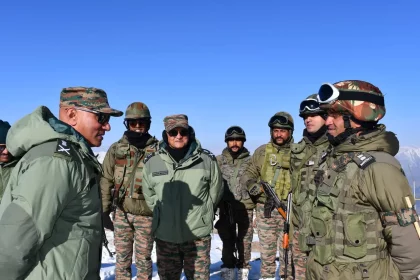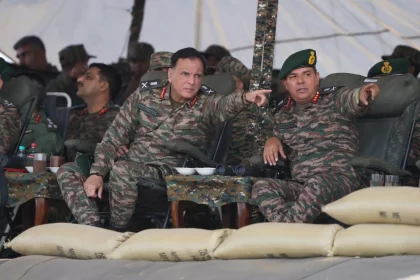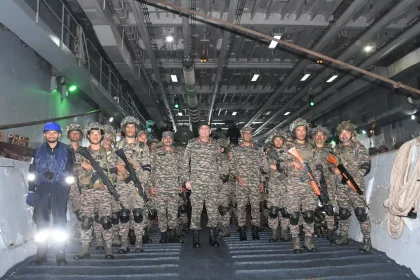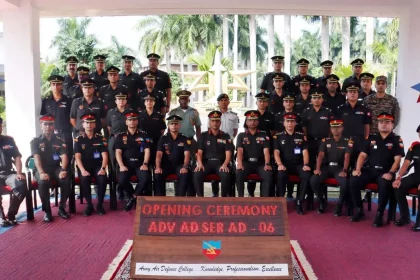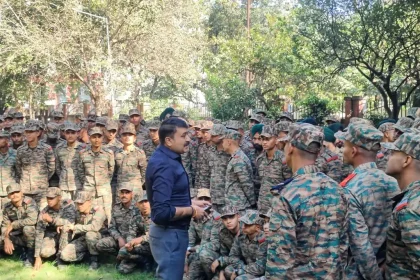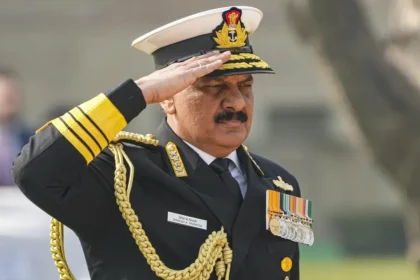Lt Gen Pratik Sharma Reviews Anti-Infiltration Grid in North Kashmir
Army Commander underscores technological integration and unwavering preparedness along the Line of Control.
Akhand Prahaar – The Power of Integrated Combat Unleashed in the Desert Sector
Southern Command validates multi-domain, high-tempo combat capability of Konark Corps under Exercise Trishul.
Lt Gen Dhiraj Seth Reviews Joint Sea–Land Operations Onboard INS Jalashwa
Indian Army, Navy and Air Force demonstrate seamless tri-service synergy and amphibious assault capability.
Advance Air Defence Course Commences at Army Air Defence College, Gopalpur
Officers from India, Namibia, and Nepal train in advanced tactics and technologies to counter aerial threats.
SSP Ajai Singh Interacts with IMA Cadets, Emphasises Cyber Safety and Internal Security Cooperation
Bridging Cyber Awareness and Security Synergy: IMA Cadets Engage with Dehradun Police.
Navy Chief Admiral DK Tripathi Embarks on Week-Long Visit to the United States
Navy Chief To Hold High-Level Talks with USINDOPACOM and Pacific Fleet Commanders on Strengthening Indo-Pacific Cooperation.

